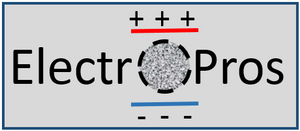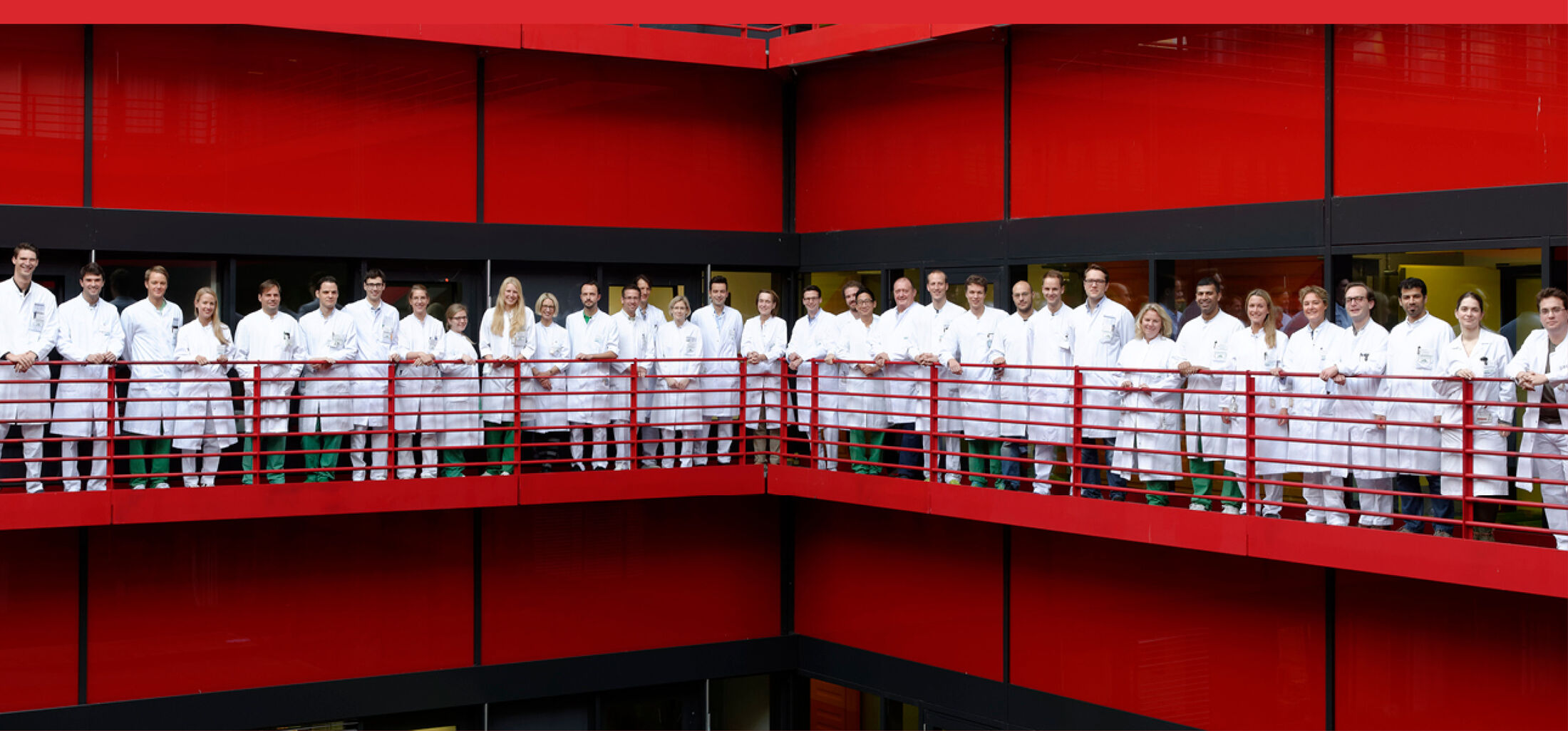Research Project “ElectroPros”
This project has received funding from the European Union’s Horizon 2020 research and innovation programme under the Marie Skłodowska-Curie grant agreement No. 813192 (call: H2020-MSCA-ITN-2018).
Project Partner: Philips Oncology Solutions, Eindhoven, The Netherlands
Website: http://www.ukaachen.de/ElectroPros


Project Background: Cancer and actual Therapies
Cancer is the second most common cause of death in the world today (WHO world cancer report 2014: 8.2 million cancer related deaths per year) and numbers are still rising rapidly in an aging population. Up to the year 2050, a growth in cancer patients of ~30% is estimated. Cancer is the name for the group of malignant tumor diseases. The common characteristic is the uncontrolled growth of tumor cells, that can destroy healthy tissue. The most frequent location of metastases is the liver: In many tumor diseases, liver metastasis is a critical factor for the survival of the patient. The epidemiological indicators increase significantly for this organ.
The traditional treatment methods in cancer care are surgery, systemic chemotherapy and radiotherapy. In the last decade, a new fourth branch in cancer treatment has developed and is gaining rapidly in relevance: minimally-invasive interventional treatments. These techniques limit the size of incisions needed and so lessen wound healing time, associated pain and risk of infection. As a consequence, they can significantly reduce the side-effects for the patient while still be able to destroy the tumor completely. In today’s tumor therapy, thermal ablations are the most common ones: The tumorous tissue is destroyed by either heat or freezing. Radiofrequencyablation (RFA) and Microwaveablation (MWA) are the most commonly used for liver metastases, but they are limited especially in the tumor’s location: As the produced heat can also destroy blood vessels or at least the blood flow cools down the tumor area, RFA and MWA can’t be used for tumors located near or on those vessels.
Project Context: Electroporation-bases Therapies – An Overview
With an external electric field applied to a cell, small holes – so called “nanopores” – can be induced into the lipid bilayer of the cell. This biological effect is called electroporation (EP) and is visualized in the figure below.

If there are induced too many and too big nanopores, the cell’s membrane is destroyed permanently and the cells dies because of apoptosis (irreversible EP). Otherwise the cell can repair their phospholipid bilayer and continue on with their normal cell functions (reversible electroporation). In this case, the nanopores can be used to enhance the uptake of pharmacological active substances like chemotherapeutics into the cell.
The medical treatment modalities based on EP are Irreversible Electroporation (IRE) and Electrochemotherapy (ECT). IRE is currently used in clinical settings for the treatment of liver, pancreas and lung cancer using the AngioDynamics NanoKnife. ECT is an established treatment modality for skin malignancies using the IGEA Cliniporator. One of the main advantages is, that these treatment options are non-thermal: They do not suffer from blood vessel cooling effects and also do not harm vessels (like hepatic arteries, hepatic and portal veins and intrahepatic bile ducts) or in general the blood flow.
For a more detailed introduction to the link “What is electroporation?” below.
IRE as well as ECT offer a promising treatment alternative for patients, which are not eligible for surgical tumor resection or where systemic therapies are too demanding. Furthermore, combining IRE and ECT together with Optimizing this treatment to the individual patients, this combination is a revolutionary innovation idea in treatment of cancer. The potential reaches from drastically reducing side-effects for the patient, up to first time curative treatment for patients, which are currently considered as not curable.
Further information on electroporation-bases therapies and our research background:
- What is electroporation?
Slices from the Department of Diagnostic and Interventional Radiology, Uniklinik RWTH Aachen - Strategies and electrode design for the patient-customized application of electroporation in tumor therapy (A. Ritter):
http://publications.rwth-aachen.de/record/699111 - Electroporation of the Liver: More Than 2 Concurrently Active, Curved Electrodes Allow New Concepts for Irreversible Electroporation and Electrochemotherapy (A. Ritter):
https://www.ncbi.nlm.nih.gov/pubmed/30411673 - Single-needle electroporation and interstitial electrochemotherapy: in vivo safety and efficacy evaluation of a new system (F. Pedersoli):
https://www.ncbi.nlm.nih.gov/pubmed/31101968
Project Results and Outcomes
EP-based treatments are promising methods, that could allow a highly selective curative tumor treatment. Therefore, an accurate selective planning software is needed. Approaching this goal requires an interdisciplinary team that works closely together:
Physics, Chemistry, and Material Science: Exploring Biological Tissues Properties during EP and matching plant-based models
For EP device testing, living cells or tissue inside a living organism (including animals) are needed. Plant-based models seem to be a promising alternative to substitute animal models in research. Our study aimed to find a suitable plant-based model for visual evaluation of IRE, and to compare the geometry of electroporated areas with in-vivo animal data.
The study determined the contrast between electroporated and non-electroporated plant tissue using MRI sequences in apples and potatoes. Optimal sequence parameters and electroporation-mediated changes were identified, with FLAIR showing the best contrast in potatoes. The study also measured T1 and T2 relaxation times and ADC in potato using quantitative parameter mapping.
Publications:
- Lindelauf KHK*, Thomas A*, Baragona M, Jouni A, Nolte T, Perdersoli F, Pfeffer J, Baumann M, Maessen, RTH, Ritter A. Plant-based model for the visual evaluation of electroporated area after irreversible electroporation and its comparison to in-vivo animal data. Sci Prog. 2023;106(1):368504231156294.
DOI: 10.1177/00368504231156294
https://pubmed.ncbi.nlm.nih.gov/36803089/ - Thomas A, Nolte T, Baragona M, Ritter A. Finding an effective MRI sequence to visualise the electroporated area in plant-based models by quantitative mapping. Bioelectrochemistry. 2023 Oct:153:108463.
DOI: 10.1016/j.bioelechem.2023.108463
https://pubmed.ncbi.nlm.nih.gov/37235889/ - Thomas A, Lemainque T, Pfeffer J, Baragona M, Ritter A.
Effects of pulsed electric field parameters on electrical conductivity in Solanum tuberosum measured by four-point coaxial probe electrochemical impedance spectroscopy. Publication in progress.
Biology: Fundamental research based on in vitro studies
The first study aimed to define the pulse parameters and thresholds for IRE and RE on hepatocellular carcinoma (HepG2) cells in-vitro. Thresholds are needed for a final treatment planning software to visualize the intended ablation zone. Next, the optimal RE pulsing protocol (8 pulses, 100 µs pulse length, and 1000 ms interval), electric field strength 1000 V/cm) was used for ECT experiments with different concentrations of chemotherapeutics and calcium.
Publications:
- Lindelauf KHK, Baragona M, Baumann M, Maessen RTH, Ritter A. Pulse Parameters and Thresholds for (ir)Reversible Electroporation on Hepatocellular Carcinoma Cells in Vitro. Technol Cancer Res Treat. 2023;22:15330338221136694.
https://pubmed.ncbi.nlm.nih.gov/36600679/ - Lindelauf KHK, Baragona M, Baumann M, Maessen, RTH, Ritter A. Pulse Parameters and Thresholds for (ir)Reversible Electroporation on Hepatocellular Carcinoma Cells in Vitro. Technol Cancer Res Treat. 2023 Jan-Dec:22:15330338221136694.
DOI: 10.1177/15330338221136694
https://pubmed.ncbi.nlm.nih.gov/36600679/
Engineering: Thermal evaluation of EP-based therapies and retrospective data analysis
Irreversible electroporation entails an electrical current flux through the tissue which can be high enough to cause a noticeable temperature increase, even though it is intended to be a non-thermal treatment. The analysis of the heat distribution is recommended in the planning phase of an IRE: The target area is intended to be treated with electroporation instead of heat effects, secondly still existing thermal effect should be low enough to preserve nearby vessel structures.
Publications:
- Jouni A, Baragona M, Pedersoli F, Ritter A. Temperature Distribution on Classical Two Needles IRE Setup Versus a Single Needle Prototype.
Technology in Cancer Research & Treatment. 2024;23.
DOI: 10.1177/15330338241288342
https://journals.sagepub.com/doi/full/10.1177/15330338241288342 - Jouni A, Baragona M, Iancu A, Siepmann R, Ritter A. An evaluation of a comparison between IRE ablation zone manual measurements and computer simulation’s prediction. Publication in progress.
Informatics: Methods for planning EP-based interventions in medical software
The efficacy of EP-based interventions depends on inducing high electric fields over the tumorous tissue. Hence, optimizing the positioning and driving parameters of the applicators is an essential component of treatment planning. However, there are uncertainties such as errors in the applicator placement, patient-specific variations in water and fat content in the tissue, and the type of tumor that can affect target ablation. Thus, the effects of these uncertainties should be considered in order to make informed treatment planning decisions.
The first study was concerned with identifying the most influential parameters in an IRE treatment. This was achieved through the use of a global sensitivity analysis for the treatment outcome. In the second study, we tried to build a surrogate model that could emulate the treatment process and efficiently predict the outcome for a given treatment setting. Current research is focused on utilizing these models to develop an optimal treatment plan.
Publications:
- Lakshmi Narasimhan P, Tokoutsi Z, Baroli D, Baragona M, Veroy K, Maessen R, Ritter A. Global sensitivity study for irreversible electroporation: Towards treatment planning under uncertainty. Med Phys. 2023 Mar;50(3):1290-1304.
https://pubmed.ncbi.nlm.nih.gov/36635955/ - Lakshmi Narasimhan P, Tokoutsi Z, Cvetkovic N, Baragona M, Veroy K, Maessen R, Ritter A. Surrogate Modeling in Irreversible Electroporation for Real-time Treatment Planning. Publication in progress. Review Appl Math Model. 2023
DOI: 10.1016/j.apm.2023.10.026
https://www.sciencedirect.com/science/article/pii/S0307904X23004651
Conferences
The ElectroPros Teams had several contributions on the following conferences:
ElectroPros 2023 Winter School, Online-Event, February 10, 2023
Self-organized event with talks from all project members plus other talks matching the topics (see program).
- Kim Lindelauf: Pulse Parameters and Thresholds for (ir)Reversible Electroporation on Hepatocellular Carcinoma Cells in Vitro.
- Prashanth Lakshmi Narasimhan: Treatment Planning under Uncertainty for Electroporation-based Cancer Therapies
- Athul Thomas: Quantitative mapping to determine an efficient MRI sequence for visualising the electroporated area in plant-based models.
4th World Congress on Electroporation and Pulsed Electric Fields in Biology, Medicine, and Food & Environmental Technologies (WCE2022), Copenhagen, Denmark, October 9-13, 2022.
- Kim Lindelauf/Athul Thomas: Plant-based model for the optical evaluation of electroporated area after irreversible electroporation and its comparison to in-vivo animal data
- Kim Lindelauf: Pulse Parameters and Thresholds for (ir)Reversible Electroporation on Hepatocellular Carcinoma Cells in Vitro
- Prashanth Lakshmi Narasimhan: Treatment Planning under Uncertainty for Electroporation-based Cancer Therapies
- Athul Thomas: Finding an effective MRI sequence to visualise the electroporated area in plant-based models by quantitative mapping
7th International Conference on Computational and Mathematical Biomedical Engineering, Milan, Italy, June 27-29, 2022
- Prashanth Lakshmi Narasimhan: Uncertainty Quantification for Irreversible Electroporation Treatment in Oncology
BioEM2022 International Conference, Nagoya, Japan, June 19-24, 2022
- Prashanth Lakshmi Narasimhan: Surrogate modelling for irreversible electroporation treatment in oncology
BioEM2021 International Conference, Ghent, Belgium, September 26-30, 2021
- Prashanth Lakshmi Narasimhan: Sensitivity study of tumor and tissue properties on electroporation-based treatments in oncology
9th International Conference on Computational Methods for Coupled Problems in Science and Engineering (COUPLED PROBLEMS 2021), Online Conference, June 13-16, 2021
- Prashanth Lakshmi Narasimhan: Uncertainty Quantification for Electroporation-Based Treatment
8th European Medical and Biological Engineering Conference (EMBEC2020), Portorož, Slovenia, November 29 – December 3, 2020
abstracts accepted, conference cancelled
- Kim Lindelauf/Athul Thomas/Ali Jouni: Bridging multiphysics simulation and cell culture to validate the potential of electroporation in liver cancer
- Prashanth Lakshmi Narasimhan: Sensitivity study of electrode position on the effectiveness of electroporation-based treatment
BioEM2020 International Conference, Oxford, United Kingdom, September 21-26, 2020
abstract accepted, conference cancelled
- Kim Lindelauf/Athul Thomas/Ali Jouni: Bridging multiphysics simulation and cell culture to validate the potential of electroporation in liver cancer
If you have any questions regarding ElectroPros research project, master theses for biologists, engineers and physicists or doctoral theses for physicians, please do not hesitate to contact us:
Team Management Uniklinik RWTH Aachen
Dr.-Ing. Andreas Ritter
aritterukaachende
Team Management Philips
M.Sc. Ralph Maessen
r.t.h.maessenphilipscom
Clinical Management
Univ.-Prof. Dr. med. Philipp Bruners
pbrunersukaachende
Team
M.Sc. Ali Jouni (Biomedical Engineering)
ajouniukaachende
M.Sc. Athul Thomas (Physicist)
atthomasukaachende
M.Sc. Kim Lindelauf (Biologist)
klindelaufukaachende
M.Sc. Prashanth Lakshmi Narasimhan (Computational Mechanics)
prashanth.lakshminarasimhanphilipscom



